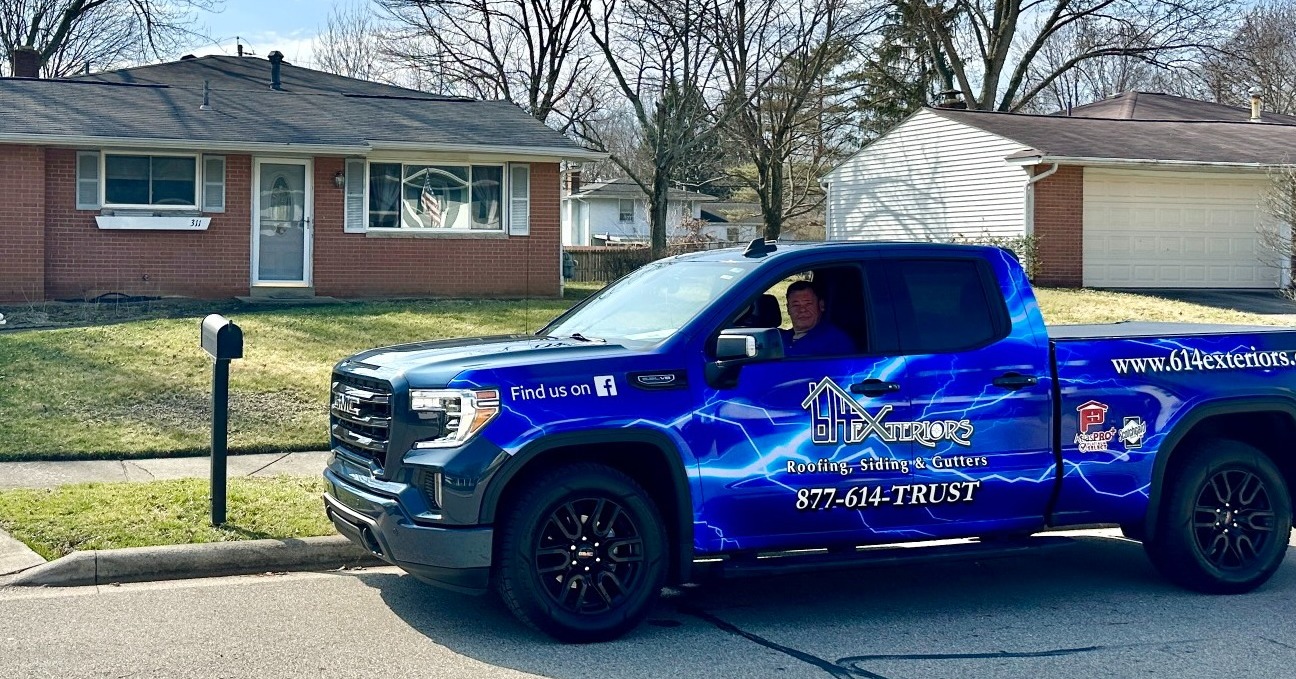614 Exteriors is the ONLY Atlas PRO+™ Diamond Level Contractor in the Greater Columbus Area and only 1 of 3 in the state of Ohio
Learn MoreCan the felt on a roof get wet? Learn how roofing felt resists water, when it’s vulnerable, and best practices for protecting your roof.
.jpg)
When storms blow through and rain drums against your shingles, there’s a hidden layer working overtime to keep you dry. Beneath the shingles lies roofing felt, a humble but vital barrier that protects the roof deck from moisture. Homeowners often wonder how this felt behaves when it encounters water. Understanding the answer is essential whether you’re scheduling roof repair, planning a roof replacement or simply caring for your home in Columbus.
It helps to know what roofing felt is and how it fits into the overall roof system. This underlayment is usually made from organic materials like wood fibers or recycled paper soaked in asphalt, or from synthetic polymers such as polyester or fiberglass coated with bitumen. The asphalt or bitumen layer repels water yet allows vapor to escape, which prevents moisture from becoming trapped and damaging the wood deck. By creating a smooth, protective surface, felt improves shingle performance, enhances fire ratings and provides backup protection if shingles are damaged.
Roofing felt falls into two broad categories: organic and synthetic. Organic felt is thicker and more absorbent because its base is paper or cellulose, while synthetic felt uses engineered fibers that make it lighter and more tear‑resistant. Both types are coated with asphalt, giving them water‑shedding properties without making them completely waterproof. Manufacturers produce felt in different weights; for example, No. 15 is common on steep roofs, whereas No. 30 or specialized synthetic membranes provide extra durability for low‑slope or high‑moisture environments. When you’re deciding between these options, consider your climate, roof pitch and budget—and consult a professional if you’re unsure.
The question “Can the felt on a roof get wet?” highlights the purpose of underlayment. Felt is designed to repel water briefly; its bitumen coating allows rain to run off rather than soak in, offering a secondary barrier when shingles fail. However, it is not truly waterproof: the material allows vapor to migrate so that moisture escaping from the attic can evaporate. During construction, roofers sometimes leave felt exposed during unexpected showers; high‑quality felts will shed water and dry out without losing strength. But prolonged saturation can lead to wrinkling and compromise its effectiveness, especially with heavier organic felts.

A brief rainfall on exposed underlayment is typically not a cause for alarm. Felt can handle short‑term exposure because the asphalt layer helps water roll off and the material dries quickly once the sun returns. Problems arise when sheets remain wet for days. Scheduling projects during a dry window and covering unfinished sections with tarps are simple ways to avoid these headaches during roof repair or roof replacement.
Despite marketing descriptions, roofing felt is water‑resistant rather than waterproof. That distinction matters because the felt’s job is to work with shingles and ventilation systems, not to replace them. Industry experts, like those at IKO, explain that roofing felt can shed water but is not completely waterproof. The bitumen coating repels liquid water but still allows water vapor to escape. Synthetic underlayments generally have lower permeability than traditional felt, meaning they block more moisture but may trap vapor if ventilation is inadequate. When planning your next roof replacement, discuss underlayment options with your contractor to ensure your choice balances water resistance, breathability and budget.
Felt underlayment is durable, but prolonged water exposure can ruin it. Organic felts soak up water more readily than synthetics, and repeated wetting and drying can lead to permanent wrinkles or bubbles. These deformities can prevent shingles from sealing properly, making the roof vulnerable to leaks and shortening the lifespan of your roofing system. Adhesive‑backed felts can also lose their bonding strength when saturated for long periods. When underlayment is saturated, replacement is the safest option, even if that means a brief delay in installing shingles.
When underlayment gets wet, the most immediate effect is cosmetic: you may see ripples or wrinkles form as the material dries. While minor wrinkling often flattens out, severe deformities can compromise the barrier and make shingles sit unevenly. Over time, wet felt may become brittle or crack, especially under high temperatures or foot traffic. Moisture that infiltrates past the felt can rot the roof deck. For low‑slope roofs, working on damp underlayment is risky because trapped moisture can cause blisters when heated by the sun.
The best way to answer the question “Can the felt on a roof get wet?” is through prevention. Plan roofing work during seasons with stable weather, and monitor forecasts closely. If rain is likely, roofers should remove only as much old roofing as they can cover in a day. Using heavier No. 30 felt or high‑quality synthetic underlayment during wet months reduces the risk of wrinkling and water absorption. After installation, follow a checklist like What to Check After Roofers Installed A New Roof to catch issues before they become major problems.
Choosing underlayment is about matching material to your roof’s needs. Steep roofs in drier climates often perform well with lighter No. 15 felt, while low‑slope or high‑moisture environments benefit from heavier felts or synthetic membranes. Cost plays a role too: synthetic underlayments cost more initially but may save money over time due to longer life and easier installation. For homeowners in Ohio, consulting with an experienced contractor ensures that roofing in Columbus meets local code, climate and budget requirements.
Roofing felt may not be top of mind when you look up at your shingles, but it plays a crucial role in keeping your home dry. This underlayment is water‑resistant rather than waterproof; it sheds rain but must be allowed to dry between exposures. By understanding the differences between organic and synthetic materials, recognizing the signs of moisture damage and following best practices for installation and ventilation, you can extend the life of your roof. Working with trusted professionals for roof repair and roof replacement will ensure that the felt on your roof performs as intended. Asking “Can the felt on a roof get wet?” is more than curiosity—it’s a step toward safeguarding your biggest investment.
